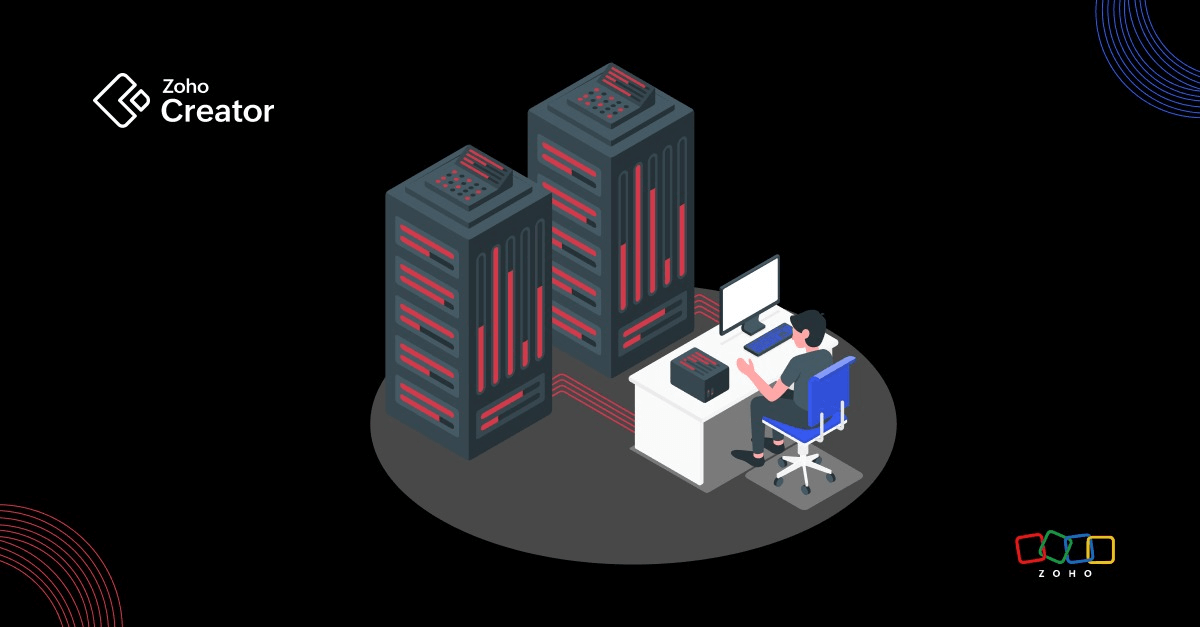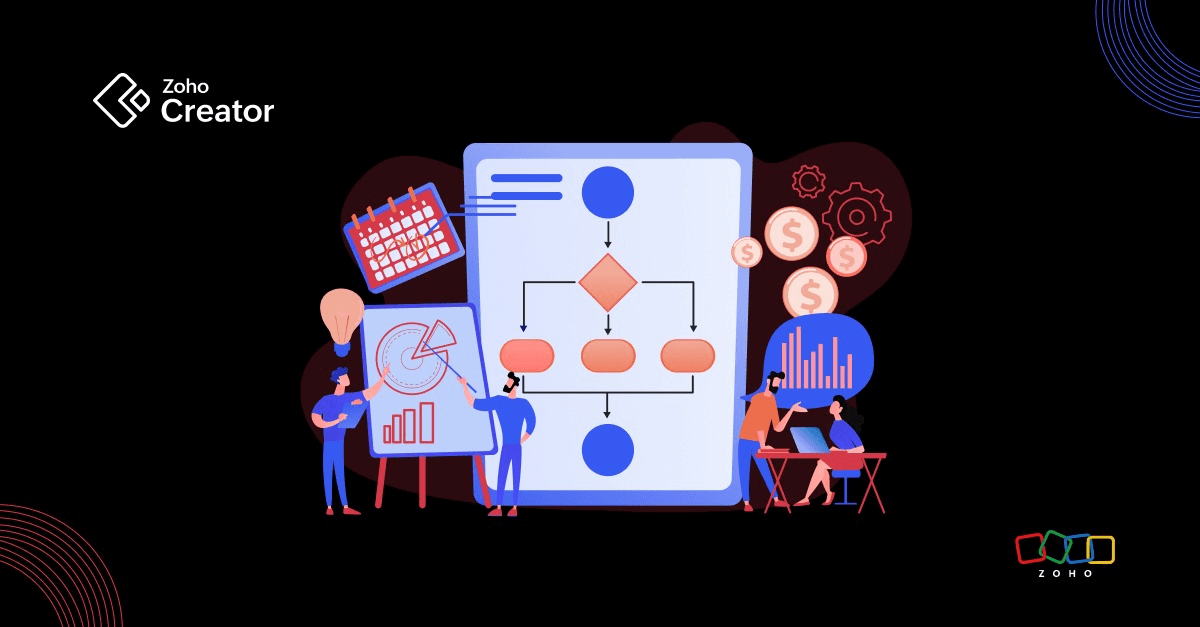- HOME
- Know Your Tech
- AI automation in enterprise software: What you need to know
AI automation in enterprise software: What you need to know
- Last Updated : November 25, 2025
- 139 Views
- 10 Min Read
Your enterprise runs on a range of disconnected systems. Every department needs custom workflows, but your existing software either can't adapt or requires months of development to make simple changes.
Highlights
- AI automation in enterprise software combines machine learning and natural language processing to handle complex workflows that adapt to changing conditions.
Organizations gain significant cost reductions by connecting disconnected systems and automating department-specific processes with AI.
The biggest value comes from customer service, supply chain optimization, HR operations, IT management, and financial processes.
Implementation success depends on clean data, thoughtful integration planning, and platforms that don't require specialist teams.
Modern AI-powered low-code platforms let you build custom applications without extensive coding or long development cycles.
But what if there was a better approach?
Data from recent studies shows enterprises focused on AI-driven operations are reporting operational cost savings of 20–40%. These gains come from connecting systems intelligently, automating complex workflows, and building solutions that fit how your organization actually works.
Find out what AI automation in enterprise software exactly means, where it creates the most value, what common challenges to expect, and how to choose the right automation platform for your organization.
What is AI automation in enterprise software?
Unlike basic automation that follows rigid if-then rules, AI automation in enterprise software handles unstructured data, learns from patterns, and adapts to changing conditions.
For instance, traditional automation might flag invoices over a certain amount for review. AI automation reads invoice details, matches them against purchase orders, detects anomalies, and routes approvals based on learned patterns.
What are the key benefits of AI automation in enterprise software?
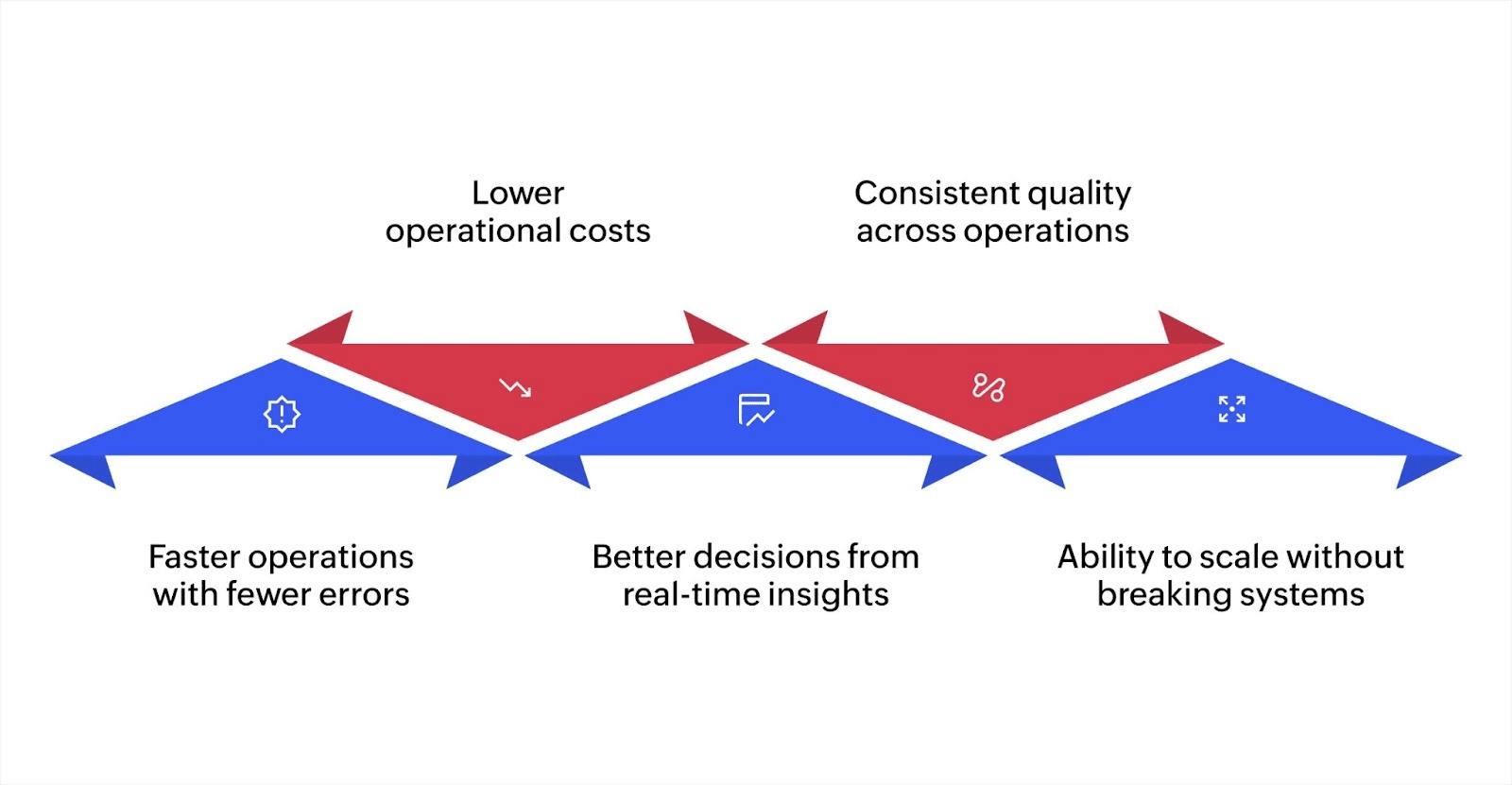
According to recent data, the share of enterprises automating more than half of their network activities will triple from under 10% in mid-2023 to 30% by 2026. This rapid adoption reflects the concrete value organizations are finding with the implementation of automation.
Here are some of the key benefits of AI automation in enterprise software:
Faster operations with fewer errors: AI completes data-heavy tasks in seconds instead of hours and maintains consistent accuracy without human mistakes.
Lower operational costs: You can grow your operations without hiring more people proportionally, which reduces your cost per transaction as volume increases.
Better decisions from real-time insights: AI spots patterns in your data instantly and gives you current information to make decisions, not outdated reports from last week.
Consistent quality across operations: AI applies the same standards every time, so quality doesn't change based on who's working or what time of day it is.
Ability to scale without breaking systems: AI-powered systems learn and adapt as your operations grow, so you can expand without rebuilding everything from scratch.
Where does AI automation create value in your enterprise?
AI automation improves specific functions across your enterprise. Here's where organizations see the biggest impact:
Function | Key applications | Primary benefits |
Customer Service | AI-powered chatbots, virtual agents, and automated routing | 24/7 support, faster response times, reduced agent workload |
Supply chain | Demand forecasting, inventory optimization, logistics routing | Cost reduction, fewer stockouts, improved delivery times |
Human resources | Resume screening, candidate matching, and onboarding automation | Faster hiring, better candidate fit, reduced administrative work |
IT operations | Anomaly detection, predictive maintenance, and automated troubleshooting | Less downtime, proactive issue resolution, and reduced operational overhead |
Finance | Invoice processing, unusual transaction detection, and financial forecasting | Faster closing cycles, improved accuracy, better cash flow visibility |
Here's how these applications work in practice:
Customer service and support
AI-powered chatbots and virtual agents handle routine customer questions around the clock. They answer common inquiries, process simple requests, and collect information before passing more complex issues to your human support team.
For instance, an AI agent can check order status, start a return process, or guide someone through basic issues. When the issue needs a human, the AI shares the full conversation history so your agent knows exactly what's already been discussed. Many enterprises deliver this through customer portals that connect AI capabilities with their support systems, creating a smooth handoff from automated to human help.
Supply chain and logistics
AI analyzes demand patterns by considering seasonality, market trends, weather forecasts, and dozens of other factors simultaneously. This helps you predict demand more accurately than traditional methods, so you can maintain better inventory levels. You avoid both stockouts that frustrate customers and excess inventory that ties up your capital.
For logistics, AI finds better shipping routes, spots equipment that needs maintenance before it breaks, and adjusts delivery plans when disruptions happen. Your operations team spends less time reacting to emergencies and more time improving how things work.
Human resources and talent management
AI processes resume screening and candidate matching much faster than manual review. They check skills, experience, and qualifications against job requirements to find the best candidates.
For employees, AI automates onboarding steps, suggests relevant training based on career paths, and flags potential retention risks by detecting changes in engagement patterns.
This gives your HR team time to focus on strategic decisions about talent and culture instead of administrative tasks. Employees get more personalized career support and faster responses to their requests.
IT operations and development
AI monitors your system logs continuously and watches for unusual patterns that might signal problems. It spots anomalies, predicts potential failures based on past data, and often fixes minor issues automatically before users notice. This cuts downtime and lets your IT team shift from constant crisis management to actually improving your systems.
IT leaders can use business intelligence dashboards to see performance patterns, plan capacity upgrades, and make informed decisions about infrastructure investments.
Development teams also benefit from AI-assisted tools that speed up building applications with smart suggestions, automated testing, and code improvements.
Finance and accounting
AI handles the repetitive work of processing invoices, categorizing expenses, and reconciling accounts that usually takes hours of manual effort each week.
It scans transactions for unusual patterns that might indicate errors or suspicious activity, often catching issues that would slip past human review in large datasets. This lets your finance team focus on analysis and strategic planning instead of data entry.
What challenges will you face implementing AI automation?
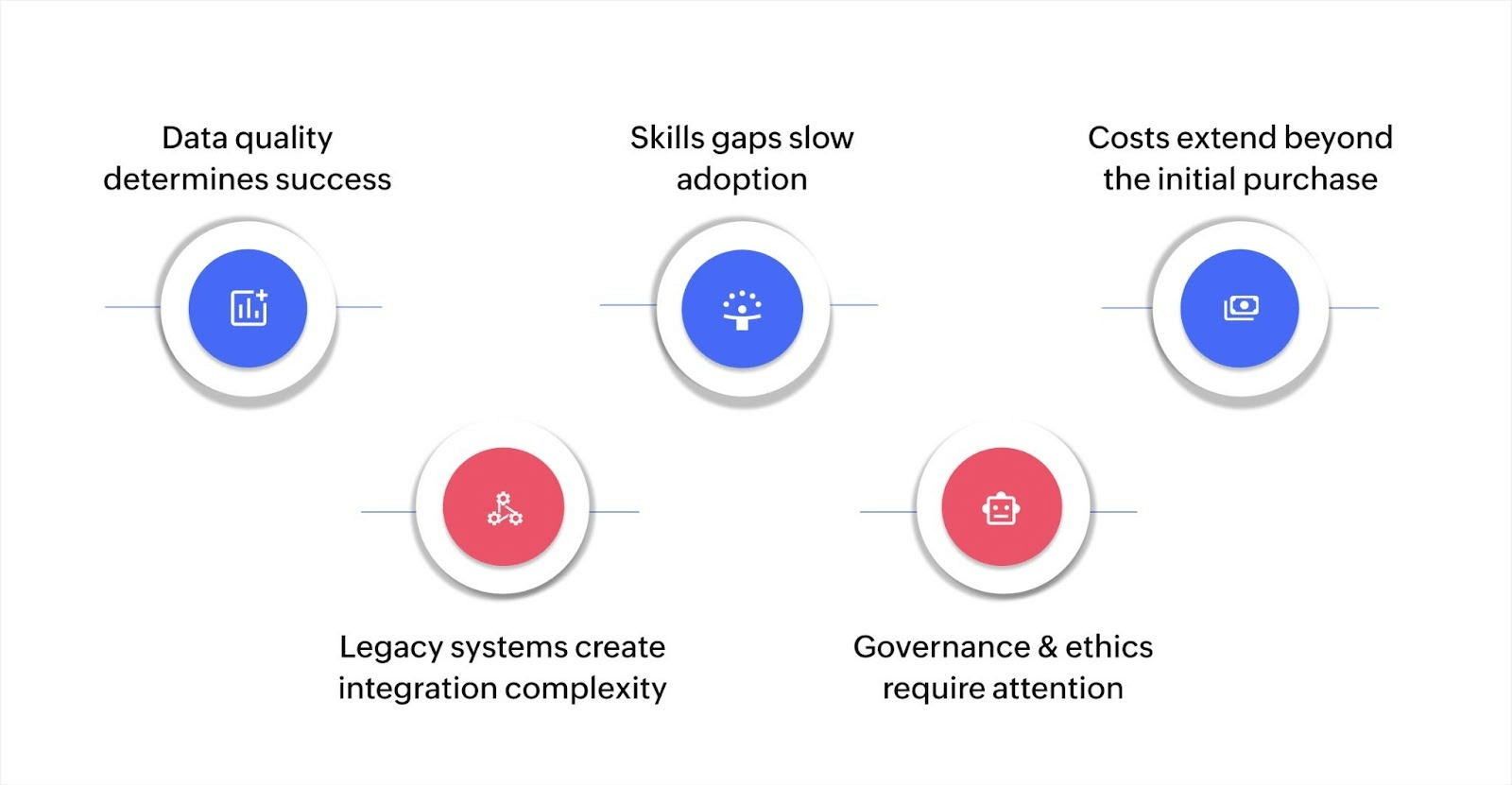
Getting AI automation right involves solving real technical and organizational problems. Here's what to expect:
Data quality determines success
AI models need clean, consistent, well-structured data to work properly. Many enterprises struggle here because data sits in disconnected systems with different formats, incomplete records, and inconsistent definitions. For instance, customer information might exist in your CRM, billing system, and support platform with no single source of truth.
Solutions
Establish data governance standards: Create clear definitions for key data elements, designate owners for each data domain, and enforce validation rules at the point of entry to prevent quality issues from accumulating.
Use AI-assisted data cleaning: Modern platforms can identify inconsistencies, suggest standardization approaches, and flag records that need manual review, significantly reducing the time spent on data preparation.
Legacy systems create integration complexity
Most enterprises run on a mix of old and new systems. Your core ERP might be 15 years old. Your customer portal might be brand new. Getting AI tools to work across this environment requires careful integration planning.
Solutions
Start with API-first platforms: Choose AI automation tools that provide robust APIs and prebuilt connectors for common enterprise systems, reducing custom integration work significantly.
Use integration platforms for complex connections: Specialized integration platforms can build connections between incompatible systems without requiring extensive custom development or replacement of working systems.
Modernize incrementally: Rather than replacing entire systems at once, build new AI-powered applications that integrate with legacy platforms, gradually shifting workflows to modern infrastructure as you prove value.
Skills gaps slow adoption
Successfully implementing AI automation requires people who understand both the technology and your operations. These hybrid skillsets are rare and expensive to hire, and training existing staff takes time and investment.
Solutions
Choose accessible platforms: Platforms like Zoho Creator address this by combining AI capabilities with low-code development, letting teams who understand your processes build solutions without deep programming expertise.
Invest in targeted training: Focus education on platform-specific skills rather than general AI concepts, getting teams productive faster with tools they'll actually use.
Partner strategically: Work with vendors who provide implementation support and ongoing guidance, supplementing internal capabilities during critical projects without permanent hiring commitments.
Governance and ethics require attention
AI systems can perpetuate biases present in training data or create unfair outcomes if not carefully designed and monitored. You need clear policies about how AI makes decisions, what data it can access, and when humans must review outputs.
Solutions
Establish AI governance frameworks: Define approval processes for AI implementations, create review checkpoints for model outputs, and document decision logic for regulatory compliance.
Build in human oversight: Configure systems to flag decisions with low confidence scores or unusual patterns for human review, maintaining accountability while gaining efficiency.
Monitor continuously: Track AI system performance over time, watching for drift in accuracy or unintended biases that can emerge as business conditions change.
Costs extend beyond the initial purchase
Implementing AI automation involves upfront expenses for technology, integration, and training. You'll also have ongoing costs for data storage, model maintenance, and keeping systems updated as AI capabilities evolve.
Solutions
Build realistic business cases: Factor in the total cost of ownership, including integration, training, and maintenance, when evaluating platforms, not just license fees.
Start with high-impact use cases: Prove ROI quickly by automating processes with clear, measurable benefits before expanding to more complex applications.
Choose flexible pricing models: Look for platforms that scale costs with usage rather than requiring large upfront commitments, reducing financial risk during implementation.
How to choose the right AI automation platform
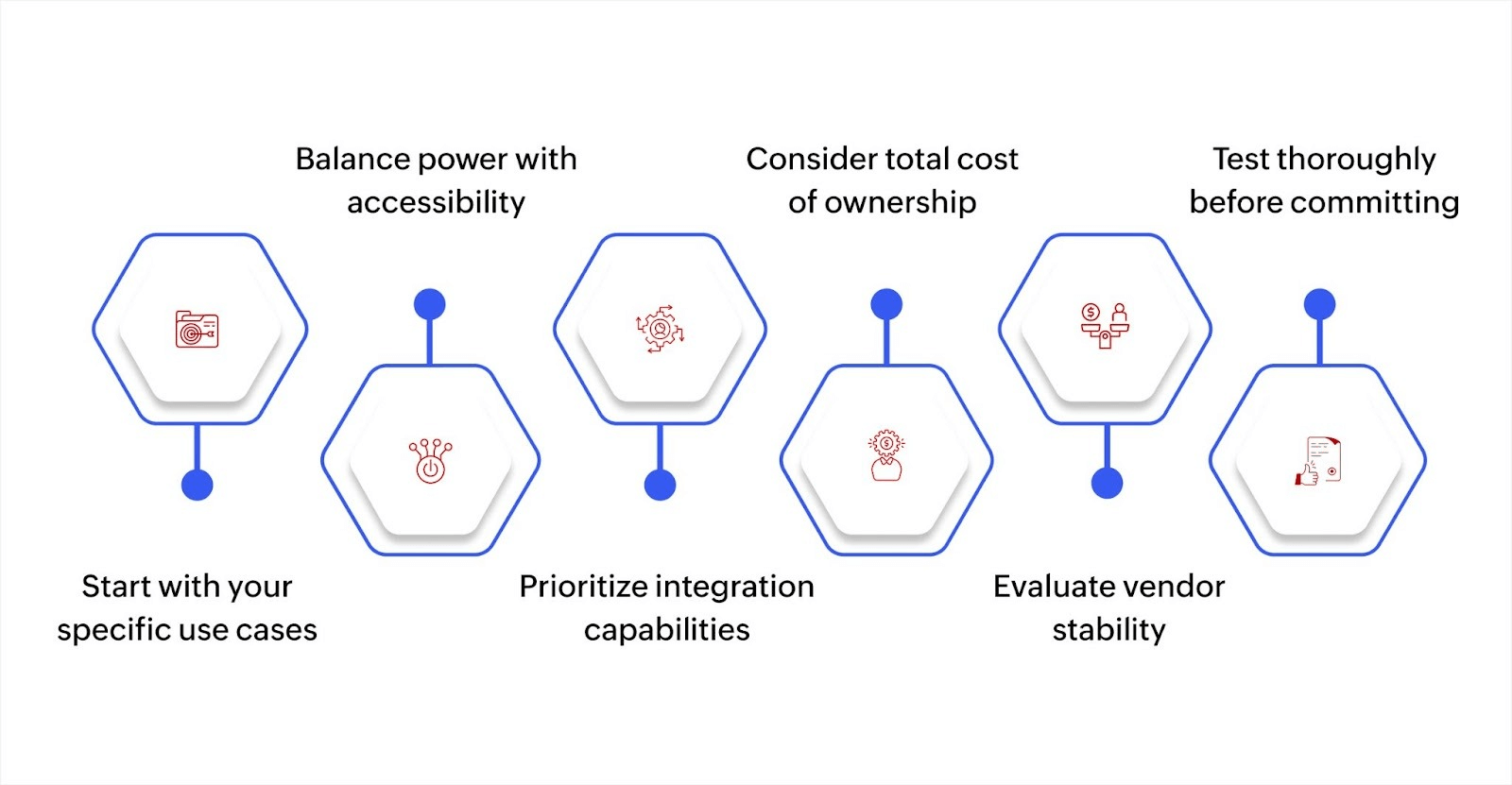
Selecting an AI automation platform that actually works for your enterprise requires careful evaluation of several factors:
Start with your specific use cases: Don't buy a platform because it has impressive capabilities you don't need. Identify the top three processes that would benefit most from automation and ensure the platform handles those well.
Balance power with accessibility: The most sophisticated AI is useless if only data scientists can configure it. You want tools that let business users build and modify automation workflows without constant IT involvement.
Prioritize integration capabilities: The platform needs to connect easily with existing systems, whether that's your ERP, CRM, databases, or industry-specific applications. Check which prebuilt connectors exist and how difficult it is to build custom integrations.
Consider total cost of ownership: Factor in implementation costs, training needs, ongoing maintenance, and the technical expertise required to keep systems running. Platforms that require large specialist teams cost more than their sticker price suggests.
Evaluate vendor stability and support quality: You're building critical operations on this platform. You need a vendor that will be around long-term and provide responsive support when issues arise.
Test thoroughly before committing: Most platforms offer trials or pilot programs. Use them. Build a real use case, involve actual end users, and see how the platform performs with your data and workflows.
Start implementing automation without the technical complexity
With most AI automation platforms, you either get sophisticated AI that requires data scientists to configure, or simple tools that can't handle complex enterprise logic.
Zoho Creator combines AI-powered automation with easy-to-use low-code features. You can build custom enterprise applications that use AI without needing extensive technical teams or long development cycles.
Here's how Zoho Creator makes AI automation easy for you:
AI-powered app building with Zia: Zoho's AI assistant helps you build applications faster by suggesting fields, workflows, and logic based on natural language descriptions. You describe what you need, and Zia helps create the structure, significantly reducing development time.
Smart automation workflows: Build complex processes visually with AI-enhanced automation that learns from patterns, routes approvals intelligently, and handles exceptions without manual intervention. Your workflows adapt as your operations change.
Conversational analytics with AI: Ask questions about your data in plain English and get instant insights through charts and reports—no need to write complex queries or understand database structures (AI translates your questions into analysis).
1,000+ prebuilt integrations: Connect Zoho Creator with existing enterprise systems through ready-made connectors or custom APIs. Pull data from multiple sources, automate cross-system workflows, and create unified views without complex integration projects.
Deploy anywhere with flexibility: Host your AI-powered applications in Zoho's cloud, your preferred public cloud (AWS, Azure, Google Cloud), or on-premises infrastructure. You control where your data lives and how applications run.
Zoho Creator gives you enterprise-grade AI automation capabilities without the enterprise-grade complexity. Your teams can build and modify applications, your IT maintains governance and security, and your operations benefit from intelligent automation that actually works.
Start your 15-day free trial and see how quickly you can build AI-powered solutions for your enterprise.
FAQ
1. What is the difference between RPA and AI automation in enterprise software?
RPA follows fixed rules to automate repetitive tasks, such as copying data between systems. AI automation handles unstructured data, learns from patterns, and adapts to new situations. AI can read emails, interpret context, and make decisions where RPA would fail.
2. How long does it take to implement AI automation in enterprise software?
Implementation timelines vary based on complexity and scope. Simple automation workflows can go live in weeks, but comprehensive enterprise-wide implementations might take six to twelve months. Starting with focused use cases and gradually expanding often works better than attempting a full transformation at once.
3. What types of data do AI automation systems need?
AI systems work best with historical data that shows patterns, structured information like transaction records and customer profiles, and real-time data for making current decisions. The specific data requirements depend on what you're automating. Customer service AI needs support tickets and resolution data while supply chain AI needs inventory, sales, and logistics information.
4. What security considerations apply to AI automation in enterprises?
AI systems need access to sensitive data, so security is critical. Ensure platforms support encryption, role-based access controls, audit trails, and compliance with regulations like GDPR. Review how vendors handle data, where it's stored, and what security certifications they maintain.
5. How do you measure ROI from AI automation?
Track metrics like time saved on manual tasks, error reduction rates, processing speed improvements, and cost per transaction. Also measure outcomes like customer satisfaction scores, revenue per employee, and time to complete key processes for measuring complete ROI.
 Bharathi Monika Venkatesan
Bharathi Monika VenkatesanBharathi Monika Venkatesan is a content writer at Zoho Creator. Outside of work, she enjoys exploring history, reading short novels, and cherishing moments of personal introspection.

